How the Pelotonia Cycling Event Raises Millions for Cancer Research
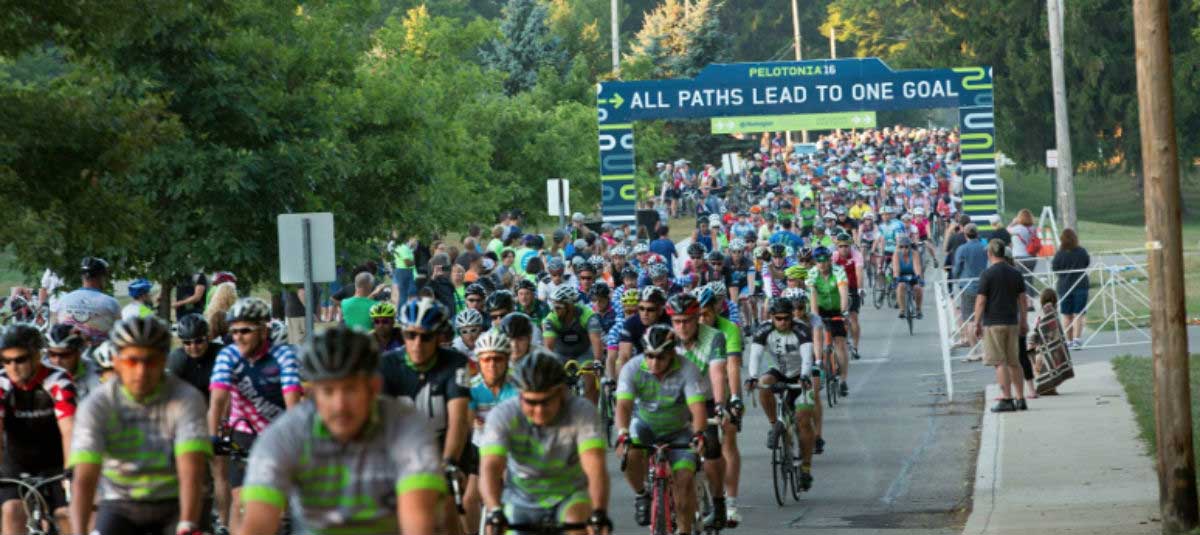
A LENND Interview by Chris Carver.
I’ve always been impressed by cause-driven events that don’t just rely on the cause to keep people engaged and coming back. It’s those that really invest in the full experience and production value that really gets me inspired.
And there are very few events that do it better than Pelotonia out of Columbus, Ohio. Just check out their stats:
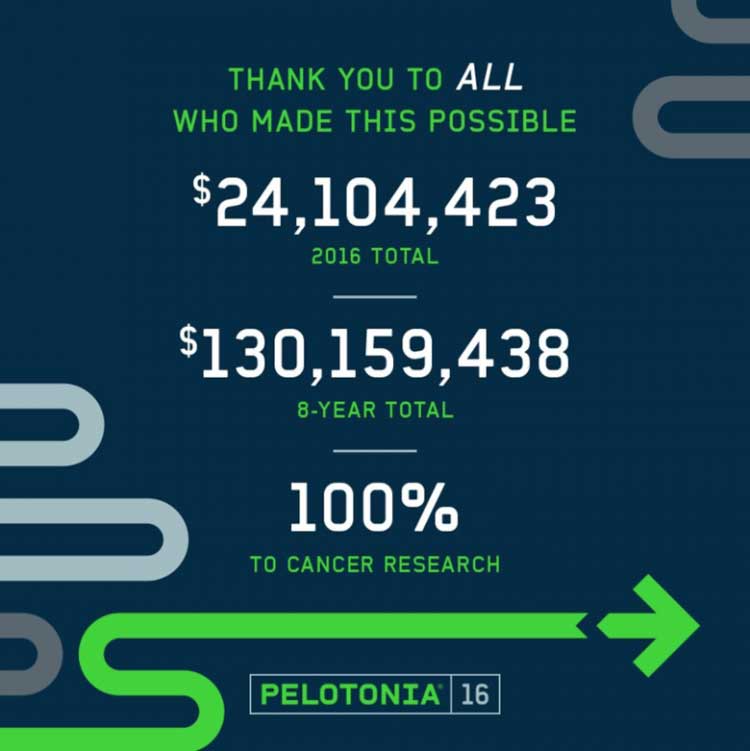
It clearly takes strong leadership to achieve those types of numbers. For those with any inkling of giving back, you’ll definitely appreciate this interview with Doug Ulman, Pelotonia’s president and CEO.
Sitting down with Doug, I was excited to pick his brain about:
- The benefits and challenges of committing 100 percent of your fundraising to your cause
- The importance of a strong brand behind your event
- What he learned from his time as CEO of LiveStrong
- Where he’d focus his time and energy if he were starting a new fundraising event from scratch
- His career advice and more
Enjoy.
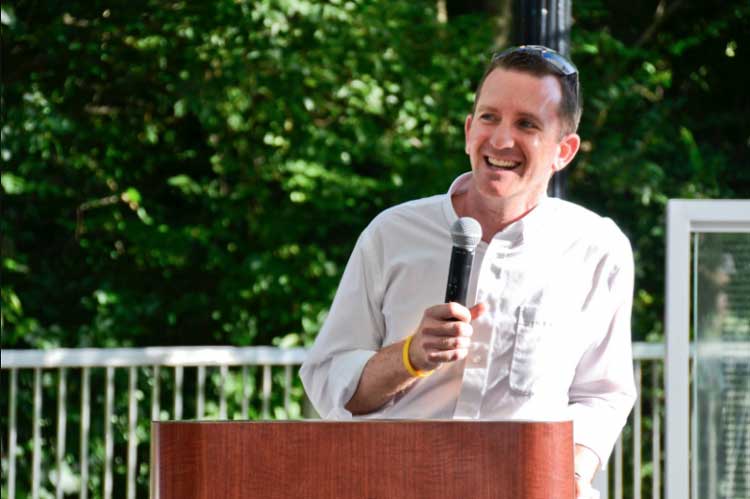
You ready to do this, Doug?
Definitely. Let’s do it.
What was 15-year-old Doug like?
I was a Deadhead soccer player. I was into The Grateful Dead and loved playing soccer. I played as much as I could all through high school and some college.
Did you ever get to see “The Dead”?
Yeah, I saw them 11 times. It was awesome that I did that because I was 19 when Jerry Garcia passed away so I saw them all through high school.
What did you want to be when you grew up?
An architect. I always loved design, I loved the style of architecture. My mom was an artist and an interior designer, so she worked at an architectural firm. In my teens I really got focused on being a teacher. I was coaching a lot of youth soccer camps and I thought, “I could teach and coach soccer at a school. That would be heaven.”
Fast forward to a night out with your buddies. How would they describe you after a few?
One, they would say, “He believes that anything is possible.” Number two, they would say, “He never stops. Always on the go, always trying to do more. Never fully relaxed.” Three, I think they’d say, “He always is trying to help others in some form or fashion.”
Have you ever thought about where those traits come from?
They primarily come from my parents. My parents were just total givers. It’s funny. I just read this book Give and Take by Adam Grant, and I was thinking about my parents the whole time because they were just selfless and always doing things for others.
If you were a piece of event equipment, what would you be and why?
I think I would be a massive jug of water. I believe that people have to take care of themselves so I’d help people hydrate and give them a better experience during the event. The other thing about the water jug is everybody congregates around it. It’s like it has meaning.
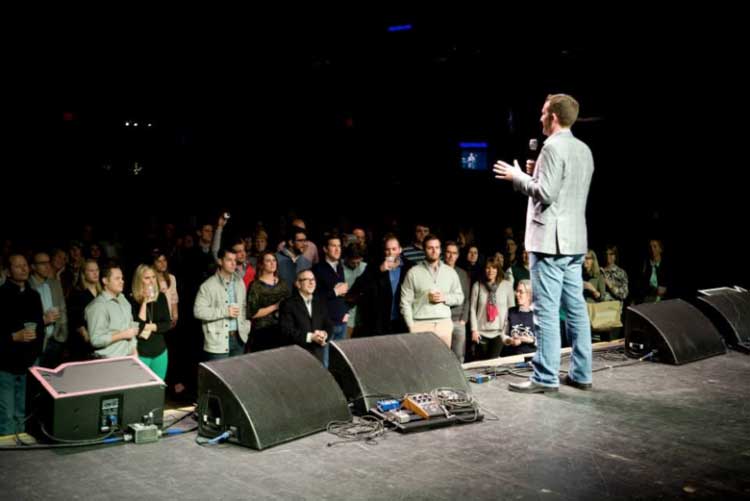
I’m curious if you’ve applied anything from your Ivy League education to your work today?
First of all, I believe that you can get a great education anywhere. I was very fortunate. Part of my opportunity to go to Brown was tied to my playing soccer. I think I was fortunate to go to a very progressive place that focused on allowing students to pursue their passion.
When I was diagnosed with cancer at 19, I immediately started focusing on the cancer world and how I could potentially help others. Brown University gave me not only the space and time, but the support, to actually pursue it. I’m not sure that would’ve happened in any other place.
There is a through line from your history with cancer. Is that what continues your desire to give back within that specific area?
I think it’s a big driver. I remember like it was yesterday, the day and the experience of being diagnosed. I remember where I was sitting, I remember where my parents were sitting, I remember the look of the room. I can see it, and it’s been 20 years.
We also used to have a saying at Livestrong where we said, “Cancer may leave your body but it never leaves your mind.” It just pops into your mind. You’re in there. It’s definitely been a driving force. I want to be a part of organizations that are trying to do transformational things, not where we can just make a little difference here or there. I have a burning desire to do big things.
Livestrong was one of the first organizations that I can think of that really focused on brand development. What were you able to bring to Pelotonia in that department?
Your brand really has to be owned by the community. I think that’s the biggest thing. That name was developed through focus groups with cancer survivors all across the country, way back in 2002. I think that authenticity of the brand is so critical and I think the same is true with Pelotonia. The people who ride and donate and support, they are the stewards and owners of the brand, and so I think you have to have that grassroots feel and you have to empower people to really be leaders.
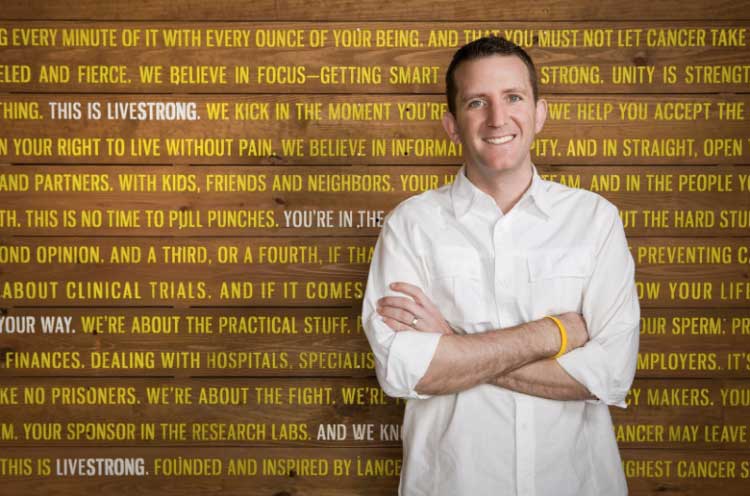
What’s one of the biggest fundraising lessons you pulled from your time at Livestrong?
The most important thing is just always having a mission and the people you’re trying to serve at the forefront. In other words, money should not drive the mission, the mission should drive the funds. I believe if you have a great idea that could have a huge impact, you can find the money to fund it.
Coming over to Pelotonia, did you have any event production experience?
We had produced a lot of events at Livestrong. I was not as involved in that side of the work but definitely had participated and been a part of producing a lot of events over the years.
Would you take that same approach if you were running a startup in the for-profit world?
I think so. I just see a lot of people chasing money as opposed to focusing on creating big ideas. If you have a potentially big market-dominating idea for a business, the venture capital or whatever, the funding is going to be there.
If you’re thinking really small and if you’re not adding any innovation or new thinking to it, you might not get funded. I think in the nonprofit world, especially, sometimes people aren’t thinking big enough. My experience with fundraising is that donors want to be inspired by big ideas. The bigger the idea, the better in terms of getting them interested and passionate about what you are trying to do.
Besides the obvious amount raised with what you’re doing today, are there any stats with the event or with the organization that just blow your mind?
The success that Pelotonia has had in such a short period of time is remarkable. Frankly, that’s what attracted me here. Obviously we’ve got this 100 percent commitment where every single dollar we raise goes directly to research, which is just a beautiful transparency commitment.
For one, most riders in Pelotonia report to us that they were not cyclists before they started riding Pelotonia. The reason that’s important to me is that that means the cause brought them in and they’ve now raised money for cancer research, but they’re also impacting their own personal health. They’re also more active, they’re more engaged in the community, and they’re doing amazing things beyond Pelotonia that they may or may not have been doing previously.
You talked about such fast growth, and I’ve definitely seen it from afar. What have been the biggest growing pains you and the team have dealt with over the last few years?
The biggest growing pain is really that, because we have this 100 percent commitment, we have to consistently go out and find partners who will underwrite the cost associated with our growth.
The key to Pelotonia is that the experience for the participants is so inspiring and so top-notch that we can’t ever sacrifice that, so we’re constantly looking at ways to enhance that experience.

How much are you and your team getting inspiration from other events and experiences?
I love going to other events and just seeing what they do because you can always pick up little things here and there and say, “We should do that.” For example, having our participants engage with our volunteers is one. We have over 3,000 volunteers during the weekend, and the ride would not work without them. Allowing our participants a way to really engage with the volunteers and thank them is a powerful thing.
You mentioned a 100 percent idea. Obviously very challenging, but how crucial is that 100 percent tag?
For us it’s critical because we started that way, and we can’t compromise that. Having the 100 percent model is an incredibly transparent, beautiful thing. The fact that 100 percent of every dollar we raise goes directly to research right here at The James Cancer program at Ohio State, it’s just so linear and so transparent.
It’s a great story to tell and we know that our donors and participants feel very strongly that that’s helped them raise their funds year after year.
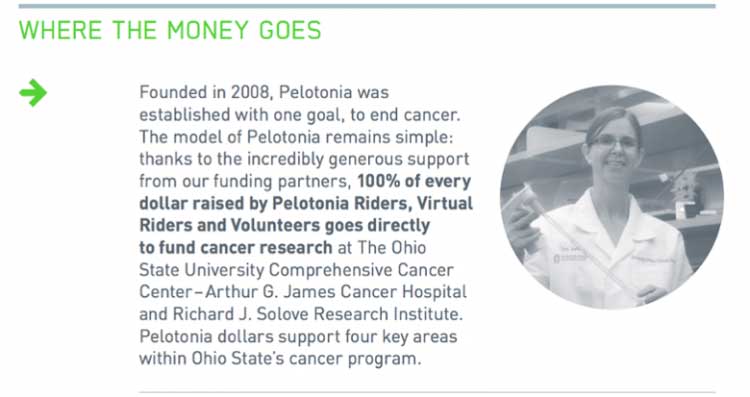
If you were starting a major fundraising event today from scratch, what are the top three things you’d focus on first?
First, focus on the experience for everyone involved.
Second, communicate about the impact and make sure that that is front and center. It should never become just about the event. There’s always a bigger purpose and a bigger focus for the event or for the activity.
Third, if you can create an event that brings this diversity of people and backgrounds together, I think that’s the special sauce.
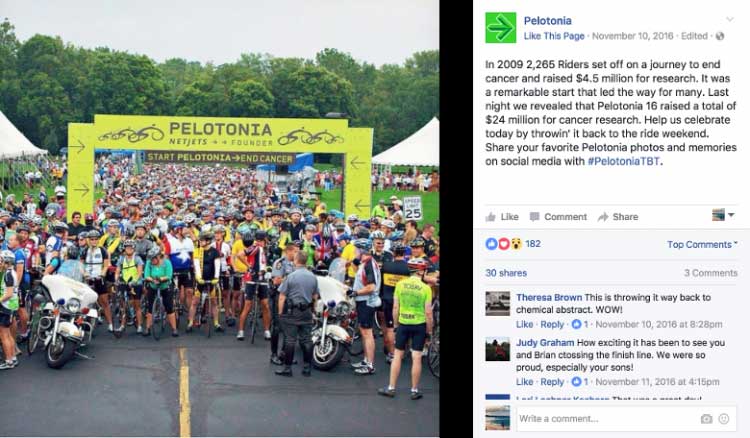 How is the internal communication structured leading up to the big day? What processes do you find are most helpful?
How is the internal communication structured leading up to the big day? What processes do you find are most helpful?
We meet every Monday morning and we do that year-round. And then we have an email that goes out every Monday night and it goes to our whole team and it goes to our whole board. It basically says, here’s what’s going on, here are the priorities for the week ahead, here’s what we did last week, et cetera.
I believe in over-communicating. I want people to ask questions and be a part of the dialog and the discussion, so I think it’s just critical to continue to over-communicate—especially when there’s a lot going on. It’s a stressful time of year during the summer.
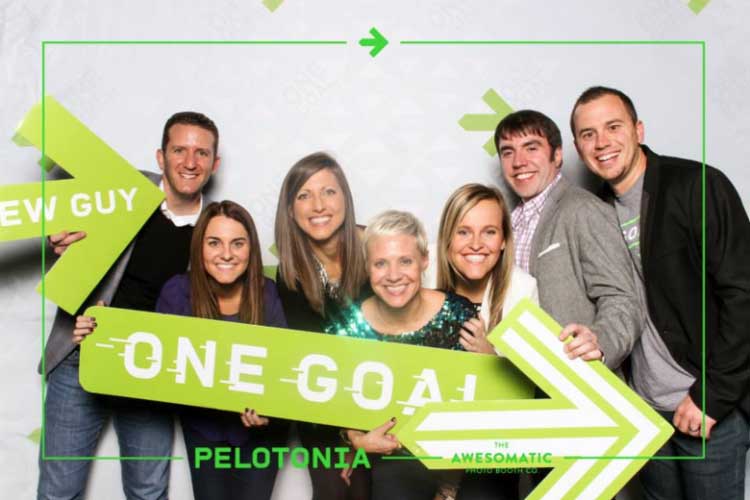
How do you structure the fundraising team?
We have a bunch of different groups within the organization, but we have one specific group that focuses on recruiting riders. Because the vast majority of our fundraising comes from riders raising dollars from their peers and friends and family, we really focus on how we recruit riders.
That team, we’re out every day starting in March and April, going to companies, having breakfast with organizations, asking companies if we can set up in their cafeteria and give a talk about Pelotonia, going to nighttime kickoffs for community groups. Very hand-to-hand combat, so to speak.
We’re almost going door-to-door. It’s really because the person that sits next to them at work is doing it, or it’s because their mother or father, brother, sister, son, daughter were just diagnosed, or because they heard somebody give a talk at their company. It’s a much more personal thing. That can be draining and exhausting, but it’s the way that it works.
Keeping in mind the fundraising process, rank the difficulty between adding new fundraisers, retaining past fundraisers, getting new donors, or retaining past donors.
We’re primarily focused on retaining and adding fundraisers. Historically, we’ve cherished the relationship between the participant and their donors and we have not crossed that path. If you participate in Pelotonia and you had 100 donors, those donors might only hear from Pelotonia once a year.
We’ve really tried to make sure our participants know that we’re not going to spam them, we’re not going to constantly try to ask them for things. If our donors ask for more information and more communication, then of course we will provide it, but we want to really respect that relationship.
The one challenge for an event like this is that it’s in the summer. You often run into other conflicts and scheduling issues. In the past eight years and with having a couple hundred people in the Pelotonia family, life comes up and that is understandable. If they can’t participate one year, then okay. But we just hope they can still donate to somebody or participate in another way. We focus on keeping people in the family.
Read Next: Bring Peer-to-Peer Fundraisers Back Every Year
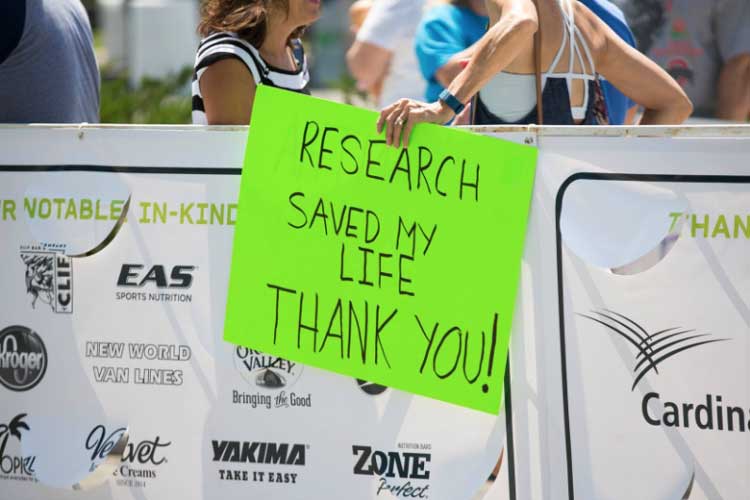
What are the biggest logistical challenges of putting on a bike ride event of this magnitude?
Safety is the biggest thing because we’re a two-day event and it’s 180 miles for the people that are doing the full thing. So that’s 180 miles of road. Imagine we have a police officer at every single intersection for 180 miles.
Next is the budget for having officers at every intersection. It’s just something we won’t compromise on. Safety is a huge issue.
Then just logistics. Feeding. On Friday night or the weekend, we feed 15,000 people. On Saturday we feed probably 12,000 people. Having that logistically set up is challenging. We bus people back at the end of the ride and we take their bikes on trucks. It also takes an unbelievable amount of volunteer leadership which, frankly, it’s just not possible without. We are highly indebted to our volunteers.
How big is the core full-time staff at Pelotonia?
We have 12 people now. We’re definitely growing the team. Phenomenal group of people—what they are able to pull off, what they do, is remarkable.
What is the size of the staff, volunteers, and vendors supporting the production of the event for that week, around the event itself?
The volunteers during the weekend are 3,000. Ten interns for the summer to our team, which basically doubles the size of our team. Then we have a couple logistics partners that’ll bring in probably 10 to 15 people to help literally with the day-to-day, the setting up, fencing and the blockades, and the management. Then we also have a huge medical team. There are going to be people who get sick or hurt or dehydrated, so we’ve got a huge medical team of volunteers and agencies from the different cities and communities that we ride through.
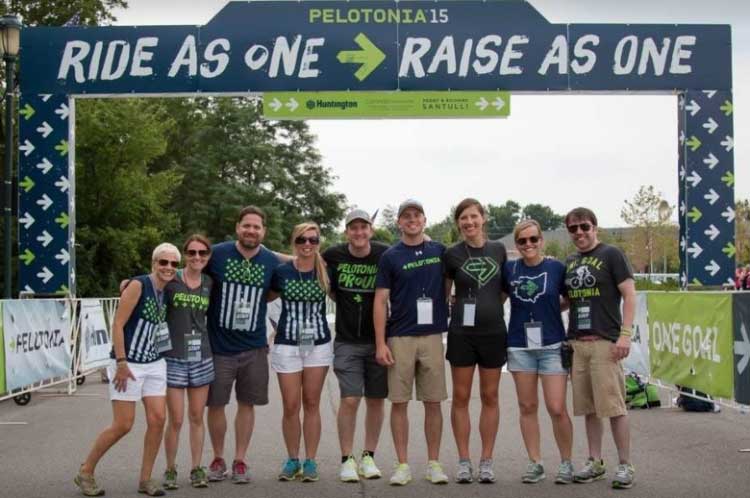
How has it been putting on and producing a pretty significant event in the city of Columbus?
They’re awesome and so supportive. We go through multiple counties, multiple communities and cities, and every one of them has just been over-the-top supportive. Whether that’s financial support, whether that’s with some of the agencies in those areas, or whether that’s certain towns actually putting up money to have cheering stations and bringing out the whole community to cheer for riders…It’s really remarkable.
What do you think other major events can do to get more involved in some type of nonprofit, being able to give back in some way?
I think it’s just a matter of being authentic and tying the experience to a cause that they’re passionate about. To me, the most important thing is authenticity. If you care about autism, then make autism your story and go deep in it as opposed to just making it superficial. As a consumer, I think we see the difference in those communications when we have people that are really genuine and authentic and care and support something passionately versus when they’re looking for a way to say that they supported a cause.
In your work life, are you insecure about anything?
Not wanting to have incremental impact. I want to be a part of something that changes the lives of millions of people, and so sometimes that will leave an insecure feeling of, can we do this? At night I’m like, “This is impossible.” I also am driven by that feeling.
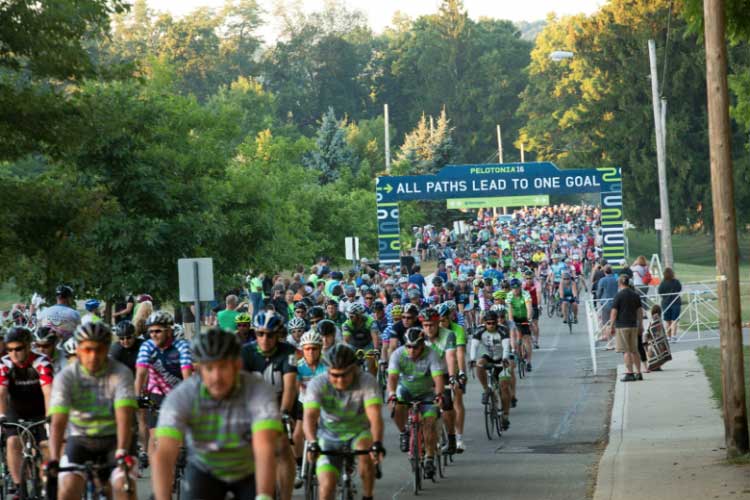
What’s the best career advice you’ve been given?
There’s a university president named Gordon Gee. He was actually at Brown when I was there. He said to me, “Your goal in life should be to never have a resume.” I asked him what he meant and he said, “Basically, if you do the best job possible at every opportunity you have, opportunities will find you and you will never have to apply for jobs.”
Chris Carver, the former COO of Invisible Children, started LENND when he realized organizations that produce events needed a better solution to manage the logistics and operations (Excel spreadsheets weren’t cutting it). In short, LENND is the operating system for event production. If interested in a demo, feel free to contact Chris at [email protected].

A Beginner's Guide to Planning a Run/Walk
Subscribe to the Classy Blog
Get the latest fundraising tips, trends, and ideas in your inbox.
Thank you for subscribing
You signed up for emails from Classy
Request a demo
Learn how top nonprofits use Classy to power their fundraising.



